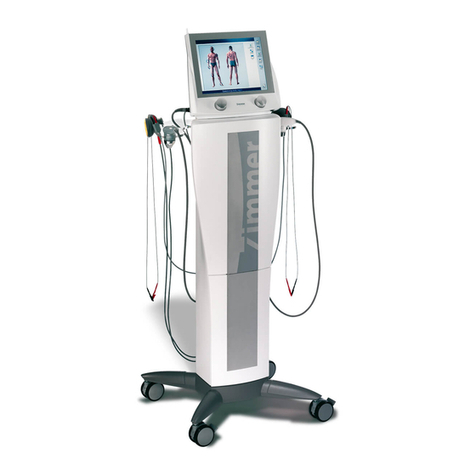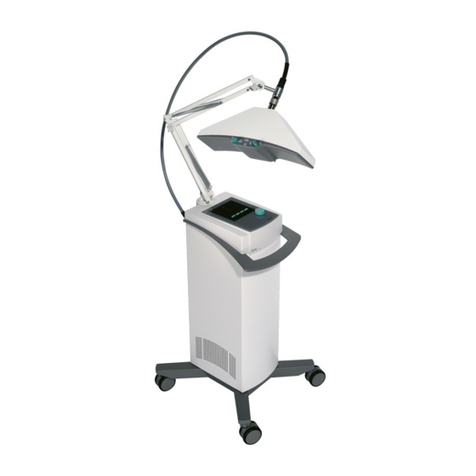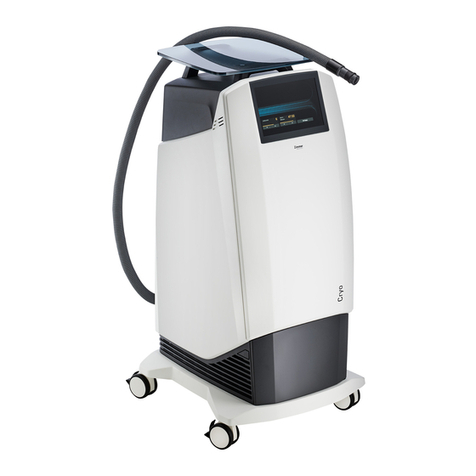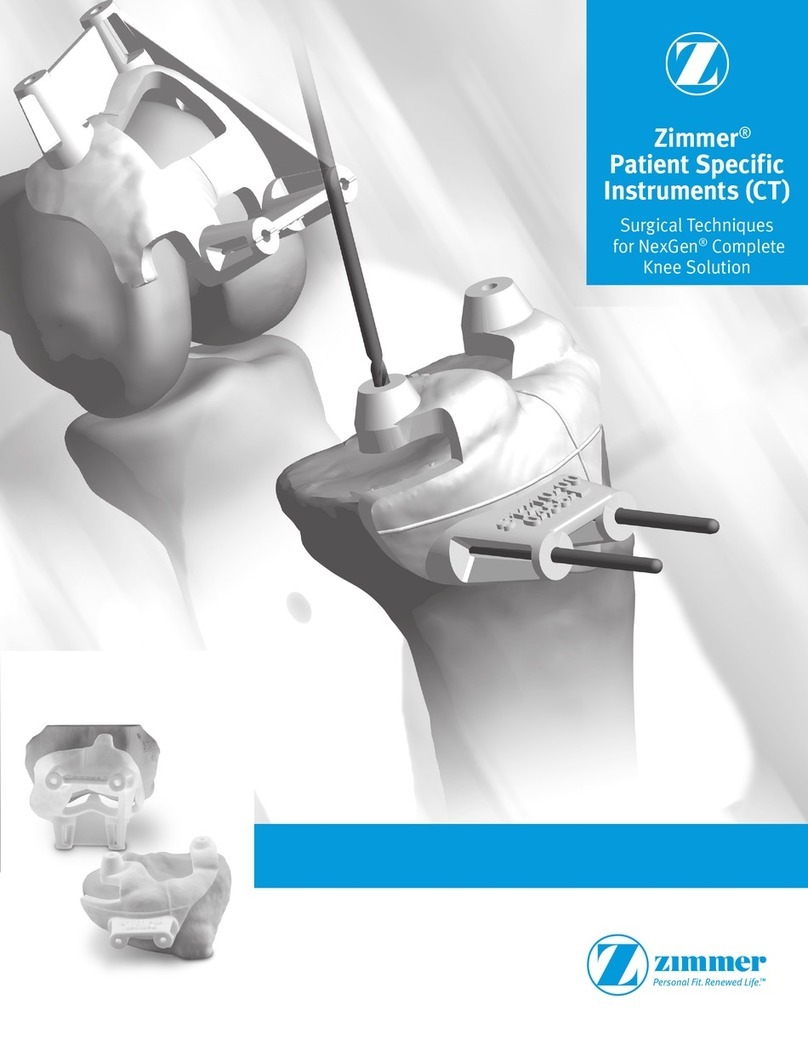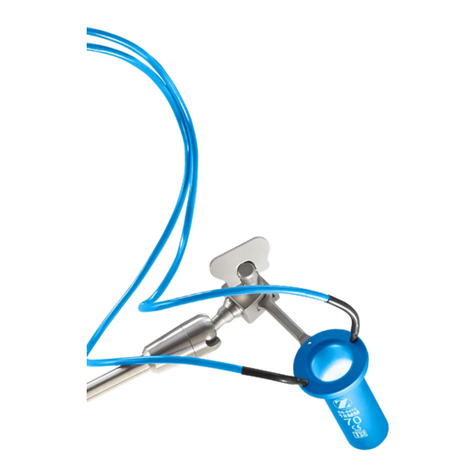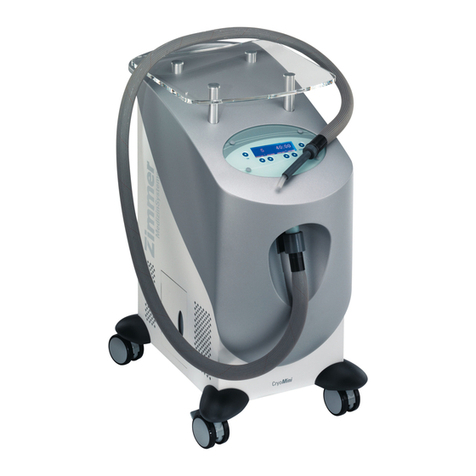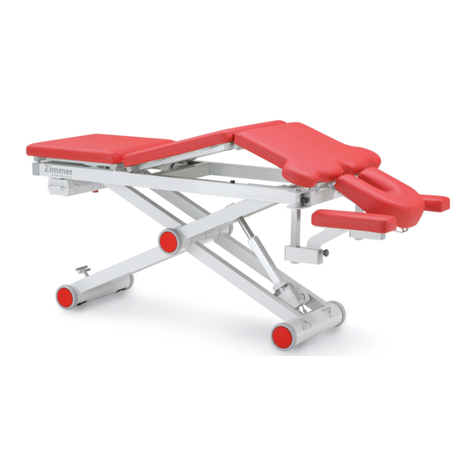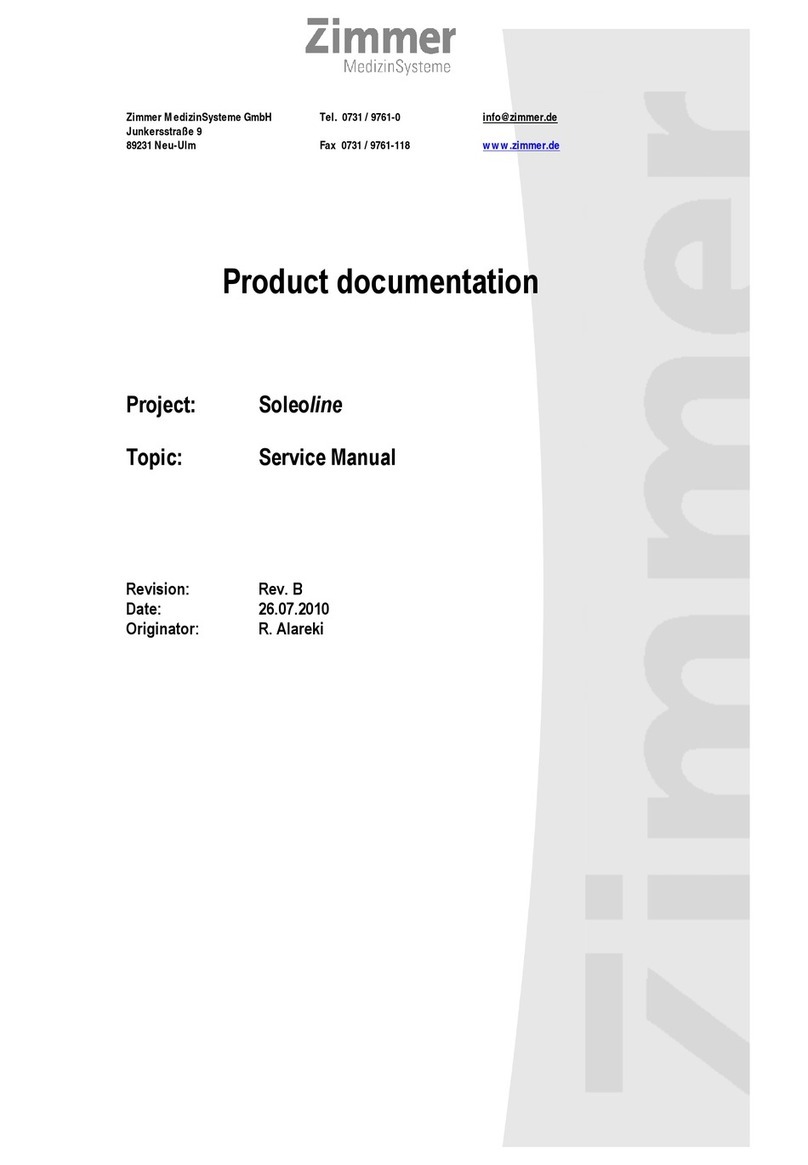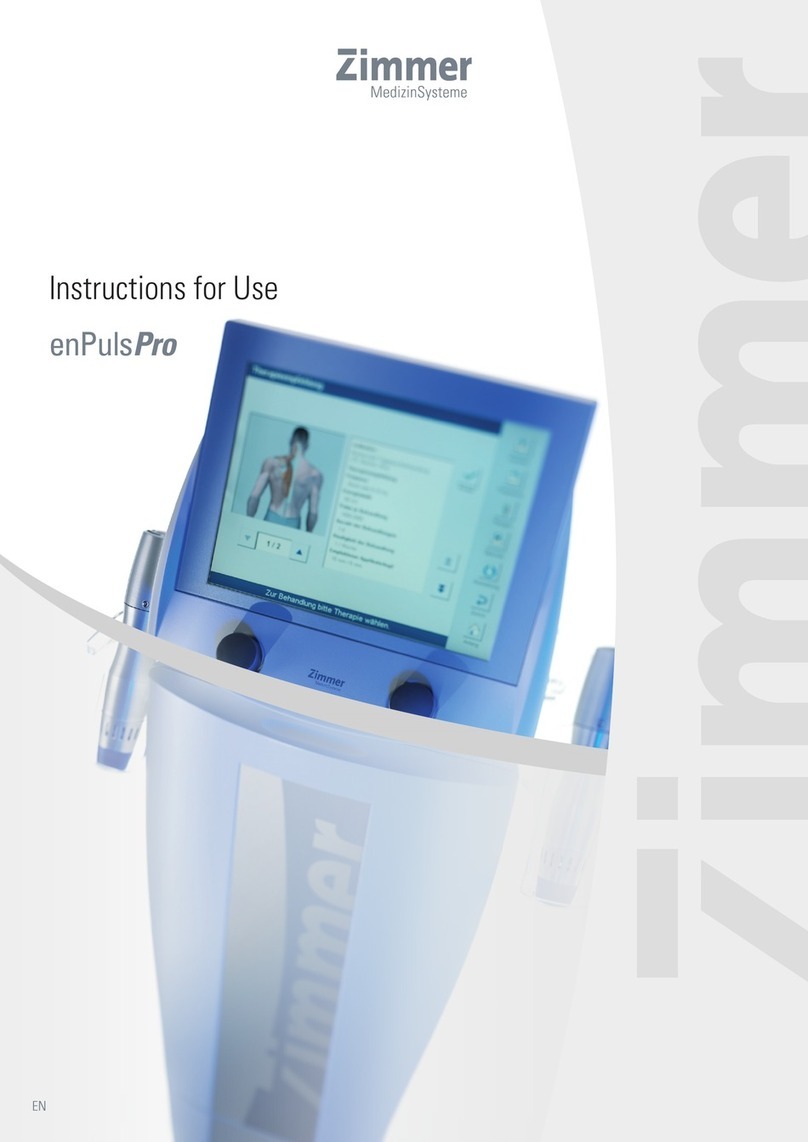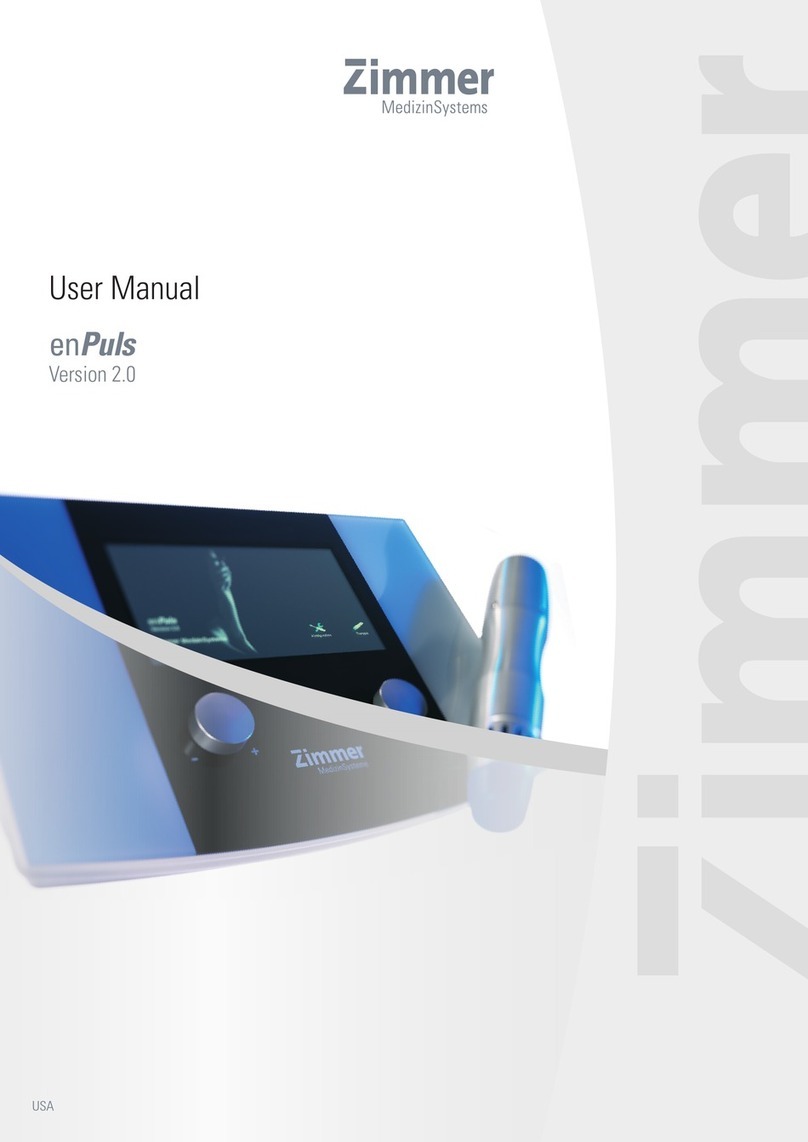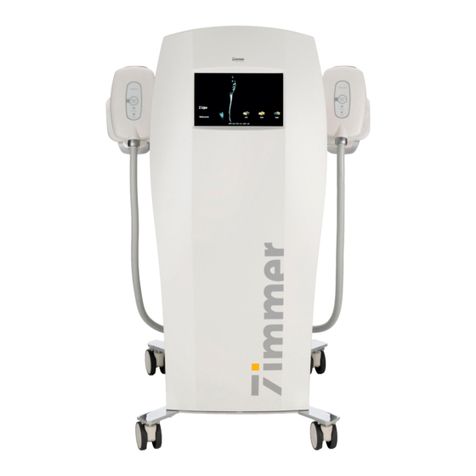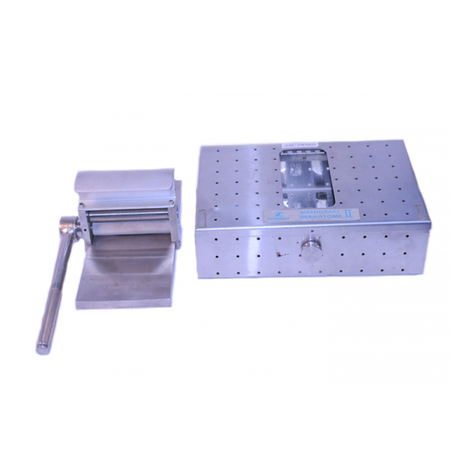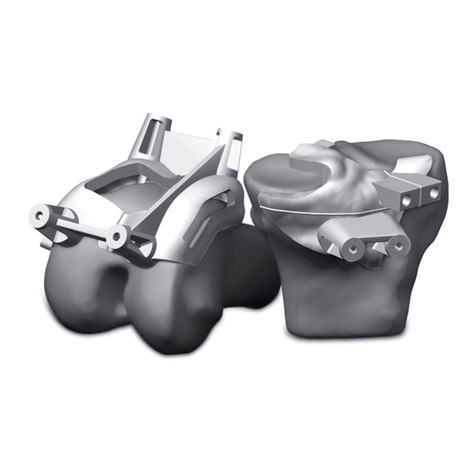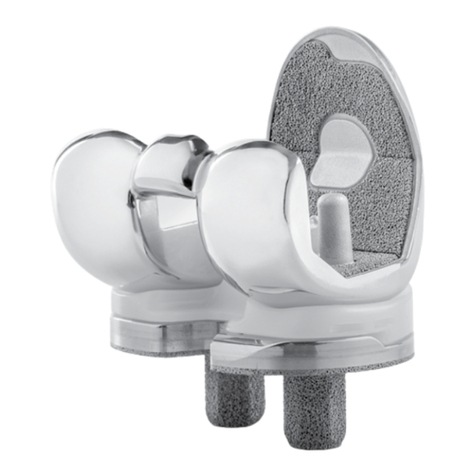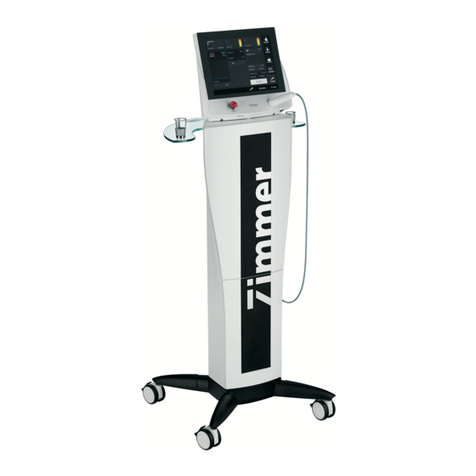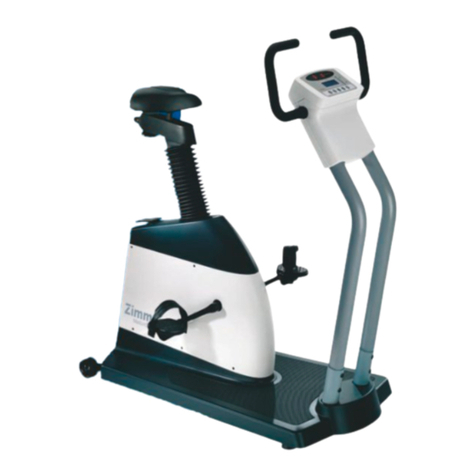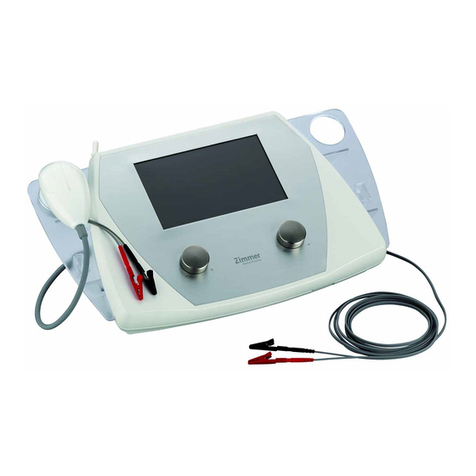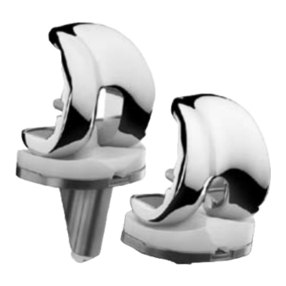
Introduction
1.1 Overview
Description, natural
course and after-
effects of diseases
High-frequency therapy is used in musculoskeletal disorders (MSD). These are
injuries to or pain in the human musculoskeletal system, including the joints,
ligaments, muscles, nerves, tendons, and structures that support the extremities,
neck, and back. MSD can develop due to sudden exertion (e.g. lifting a heavy object),
or by repeating the same movements, including repeated stress. They can also
develop due to vibrations, the repeated application of force, or improper posture.
Injuries to or pain in the musculoskeletal system caused by acute traumatic events,
such as a car accident or a fall, are not considered musculoskeletal diseases,
however. MSD can affect many different parts of the body, including the upper and
lower back, the neck, and the shoulders and extremities (arms, legs, feet and hands).
Examples of MSD are carpal tunnel syndrome, epicondylitis, tendinitis, back pain,
tension neck syndrome, and hand-arm vibration syndrome.
Clinical form, stages,
and degrees of severity
Workers remain in the same position over long workdays and often for several years;
even natural body postures such as standing can lead to MSD such as back pain.
Rather unnatural postures in particular, such as twisting or strain in the upper body,
contribute to the development of MSD through their unnatural biomechanical stress.
There are indications that poor posture contributes above all to MSD of the neck,
shoulder, and back. Repeated movement is another risk factor for occupational MSD:
when workers have to make the same movements repeatedly over a long period of
time, this can wear out joints and muscles involved (for example, typing can lead to
carpal tunnel syndrome). Even repeated movements at a fast pace of work with little
recovery time increase the risk of MSD, and workers with no or little control over the
timing of the movements (such as on assembly lines) are more prone to MSD. Regular
movements with a high degree of exertion also increase the risk of MSD since the
muscles tire faster which can lead to injuries and/or pain. In addition, the effects of
vibrations (such as in the case of truck drivers or construction work) and extremely hot
or cold temperatures can promote the development of MSD. The vibration exposure is
also associated with hand-arm vibration syndrome which presents symptoms due to a
lack of blood circulation of the fingers, such as nerve compression, tingling, or
numbness.
Incidence in the
general population
General information
Musculoskeletal diseases are a growing health problem worldwide and are the second
most common cause of disability. In the USA, for example, more than 16 million cases
of strains and sprains were treated in 2004 and the total costs for the treatment of
MSD are estimated to be more than 125 billion dollars per year. In 2006, approx.
14.3% of the Canadian population lived with a disability, nearly half of whom suffered
from MSD. Neck pain is among the most common complaints. Every year, about one
fifth of adults worldwide report pain in this area.
Workplace
Most MSD episodes at the workplace concern several parts of the body. MSD are the
most common complaints of workers in Europe, the USA, and in the Asia-Pacific
region, and the third most common reason for disability and early retirement in the
USA. In 2014, the incidence rate of MSD among the working population was 31.9
newly diagnosed MSD per 10,000 full-time staff. In the same year, the average
number of sick days due to MSD was 13; in addition, there were 10.4 MSD cases per
10,000 full-time staff in whom an MSD led to 31 or more days of absence. The MSDs
are just as widespread in professions with high biomechanical stress such as
construction and factory work as in occupations with little stress, such as office work.
The transport and storage industries, with an incidence rate of 89.9 cases per 10,000
